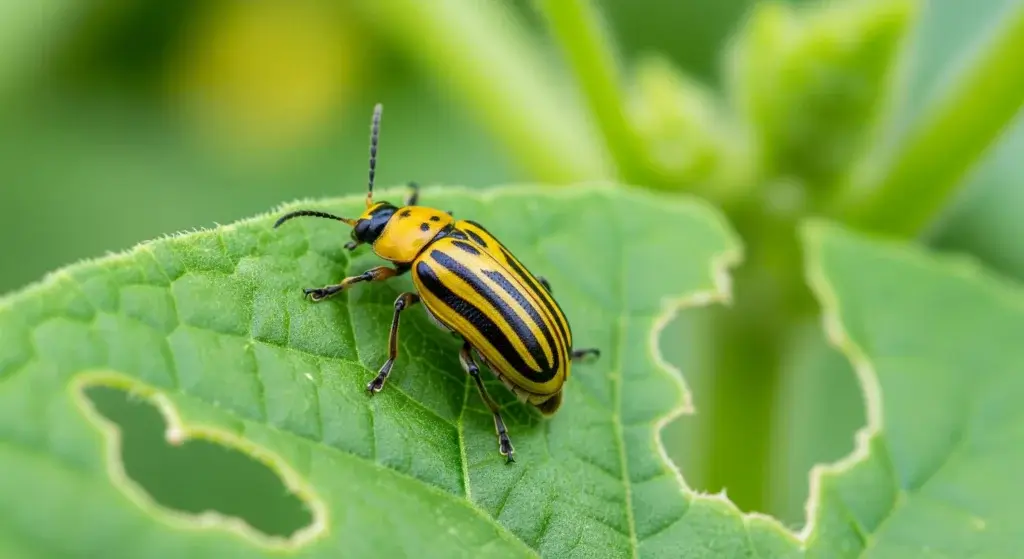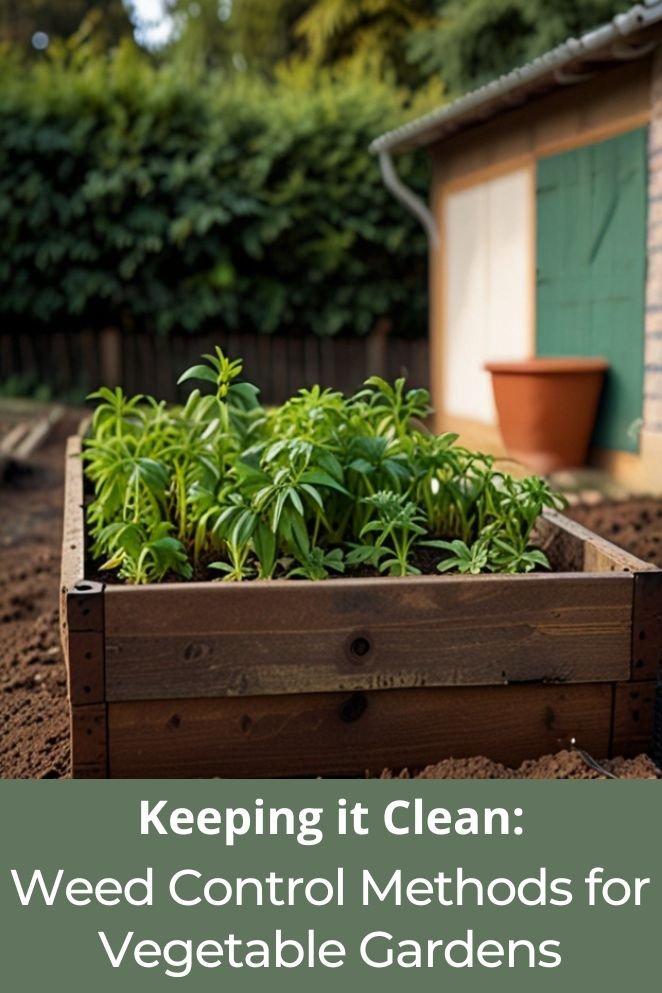
Weeds are a common problem in vegetable gardens, causing issues with growth, water consumption, and overall garden health.
Effective weed control is crucial for maintaining a thriving and productive garden.
In this article, we’ll explore the problems weeds cause, the importance of weed control, and various methods for preventing and battling established weeds.
Problems Weeds Cause in Vegetable Gardens
Weeds pose various challenges to vegetable gardens, impacting their overall health and productivity.
Here’s a detailed look at the problems weeds can cause:
- Read also: Pest Damage on Vegetables: A Guide to Identification and Control
- Read also: The Pesticide Paradox: The Impact of Pesticides on Vegetable
Competition for water and nutrients
- Limited resources: Weeds compete with vegetables for essential resources like water and nutrients present in the soil.
- Stunted growth: As a result of this competition, vegetables may experience stunted growth and reduced productivity.
- Root interference: Weeds often have extensive root systems that can outcompete vegetable roots, further exacerbating the issue.
Shading and blocking light
- Light deprivation: Weeds can grow tall and dense, shading the surrounding vegetable plants and reducing their access to sunlight.
- Reduced photosynthesis: With limited sunlight, vegetable plants may undergo reduced photosynthesis, hindering their ability to produce energy and grow.
Increased pest and disease pressure
- Habitat for pests: Weeds can serve as habitats for pests like insects and rodents, which may then move on to attack vegetable plants.
- Vector for diseases: Some weeds can harbor diseases that can spread to nearby vegetables, increasing the risk of infection and crop damage.
Reduced soil quality
- Soil disturbance: Weeds can disrupt the soil structure as their roots penetrate the ground, leading to soil compaction and erosion.
- Microbial imbalance: Presence of weeds can alter the microbial balance in the soil, affecting beneficial organisms and nutrient cycling processes.
Increased labor and maintenance
- Time consumption: Regular removal of weeds requires significant time and effort, diverting resources from other garden tasks.
- Labor intensive: Weeding can be physically demanding, especially in large vegetable gardens, requiring bending, kneeling, and repetitive motions.

Weed Control Prevention
Preventing weeds from growing in the first place is the most effective method of weed control.
By focusing on proactive strategies, gardeners can reduce the need for reactive measures like herbicides or manual weeding.
Here are some detailed methods for preventing weeds:
Proper seeding and planting
One of the simplest yet most effective strategies to prevent weed growth is proper seeding and planting.
The key lies in the spacing of your plants.
By planting vegetables, flowers, and other plants at the recommended spacing, you can create an environment where weeds struggle to compete.
Optimal spacing
Each type of plant has specific spacing recommendations.
When plants are too close together, they may compete for nutrients, water, and light.
Conversely, when they are too far apart, they leave gaps that weeds can exploit.
Following the recommended spacing ensures that your plants can grow healthily while shading the soil between them, making it difficult for weeds to establish.
Row planting vs. block planting
Depending on the type of crop, consider the planting method.
For example, block planting—where plants are grouped closely in blocks rather than in rows—can create a denser canopy, which shades the soil and reduces weed growth.
Companion planting
Some plants can help suppress weeds when planted together.
For instance, taller plants can provide shade for smaller, ground-covering plants, creating a natural barrier against weeds.
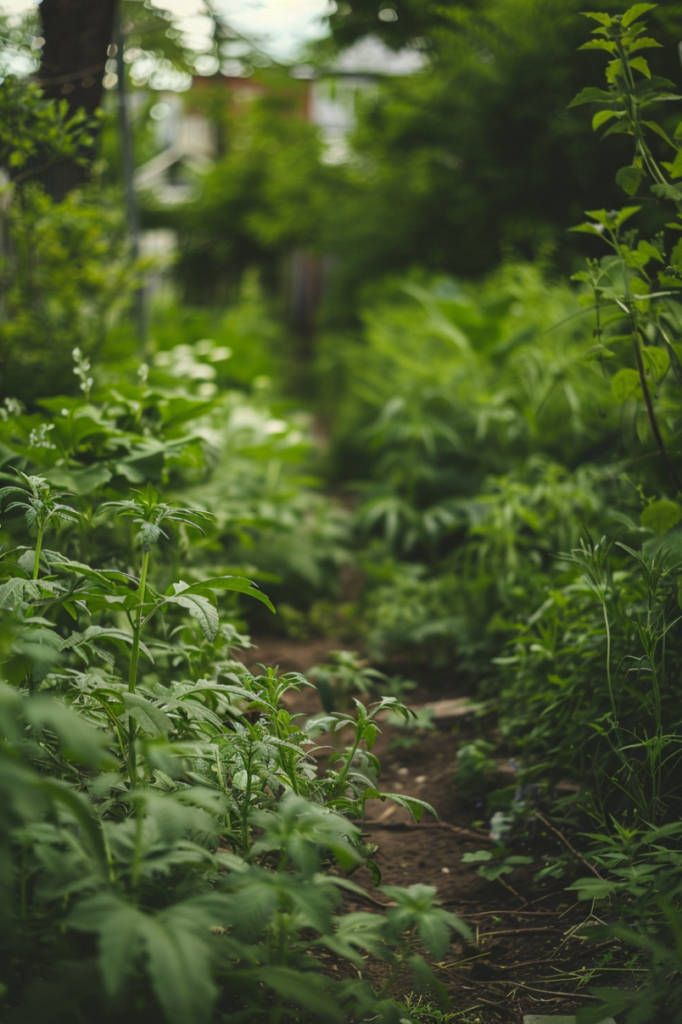
Mulching
Mulching is a highly effective technique for weed prevention that also offers additional benefits for your garden’s health.
Types of Mulch
Organic mulch
Includes materials like straw, grass clippings, leaves, and compost.
Organic mulch not only suppresses weeds but also enriches the soil as it decomposes, improving soil structure and fertility.
Inorganic mulch
Includes materials such as black plastic, landscape fabric, or gravel.
These materials are excellent for long-term weed control and are particularly useful in areas where you don’t want plants to grow, such as pathways or around perennial shrubs.
Application
Apply mulch to a depth of 2-4 inches around your plants, ensuring the mulch does not directly touch the stems of the plants to prevent rot.
This layer blocks sunlight, which weed seeds need to germinate, and retains soil moisture by reducing evaporation.
Maintenance
Periodically check your mulch layer and replenish it as needed to maintain its effectiveness.
Organic mulch, in particular, will break down over time and may need to be topped up regularly.
Maintaining healthy soil
Healthy soil is the foundation of a healthy garden and plays a crucial role in preventing weed growth.
Soil composition
Ensure your soil has the right balance of sand, silt, and clay to provide good drainage while retaining enough moisture for plant roots.
A well-drained soil discourages the growth of weeds that thrive in waterlogged conditions.
Adding organic matter
Regularly add organic matter such as compost, manure, or leaf mold to your soil.
This not only improves soil fertility and structure but also promotes beneficial microbial activity that helps keep weed populations in check.
Proper irrigation
Water your plants in a way that minimizes weed growth.
Drip irrigation systems or soaker hoses can deliver water directly to the plant roots, reducing the moisture available to weeds on the soil surface.
pH balance
Regularly test your soil’s pH and adjust it as needed to ensure it is within the optimal range for the plants you are growing.
Many weeds prefer either very acidic or very alkaline soils, so maintaining a balanced pH can help prevent their establishment.
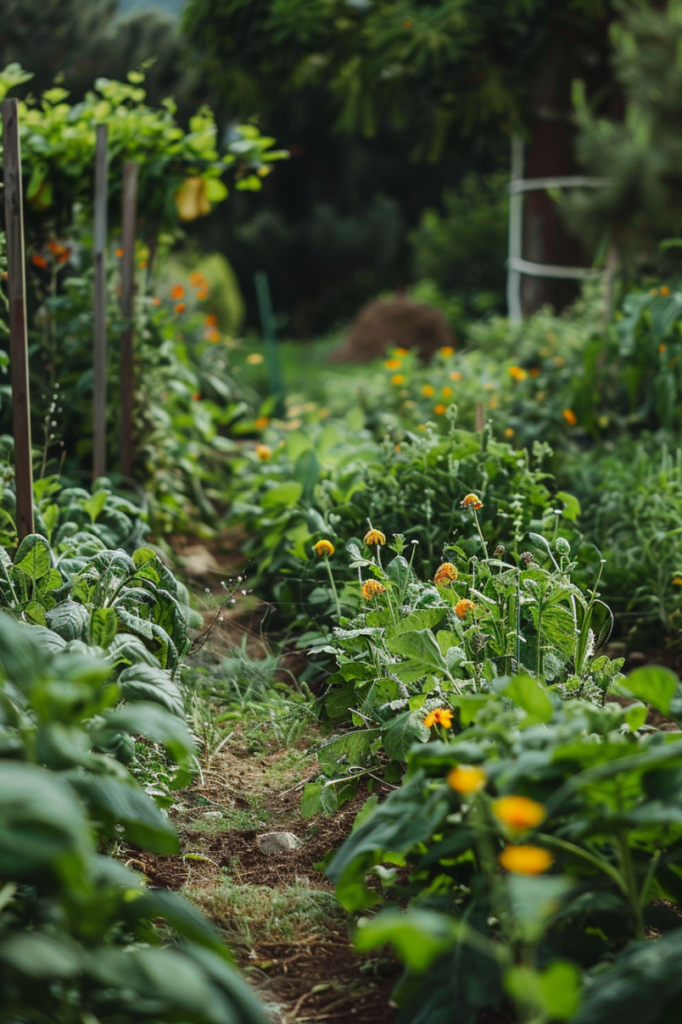
Battling Established Weeds
When weeds have already taken root in your garden, it’s crucial to act promptly and effectively to control them.
Here are several methods for managing established weeds, ensuring your garden remains a healthy and productive space:
Manual removal
Manual removal is one of the most straightforward and environmentally friendly methods for controlling weeds.
Using the right tools
Equip yourself with the proper tools such as a hoe, hand trowel, or weeding fork.
These tools are designed to make weed removal easier and more efficient.
A hoe is excellent for larger areas, while hand tools are better for precise work around delicate plants.
Removing the entire root system
It’s important to remove not just the visible parts of the weed but the entire root system.
Many weeds can regrow from small root fragments left in the soil.
For deeper-rooted weeds, a dandelion digger or similar tool can help you get to the root without disturbing too much soil.
Timing
The best time for manual weeding is after a rain when the soil is moist and roots can be more easily extracted.
Early morning or late evening is also ideal to avoid the heat of the day, making the task less strenuous.
Regular maintenance
Consistency is key.
Regularly inspect your garden and remove weeds as soon as they appear.
This prevents them from seeding and spreading further.
Cultivation with caution
Cultivation involves turning over the soil to uproot weeds and can be very effective if done carefully.
Effective cultivation
Use a hoe or cultivator to gently disturb the soil surface, uprooting small weeds before they become established.
This method works best on young, shallow-rooted weeds.
Avoiding damage
Be mindful not to cultivate too deeply or too close to your vegetables, as this can damage their root systems and disturb soil structure.
Over-cultivation can also bring dormant weed seeds to the surface, where they can germinate.
Timing and frequency
Cultivate when the soil is dry. Wet soil can cause clumping and damage soil structure.
Regular, shallow cultivation is more effective and less disruptive than infrequent, deep tilling.
Combining techniques
Combining cultivation with mulching can be particularly effective.
After cultivating, apply a layer of mulch to suppress any weed seeds that may have been brought to the surface.

Considering organic options
For those looking to avoid chemical herbicides, several organic methods can effectively control weeds.
Boiling water
Pouring boiling water directly onto weeds can kill them by effectively cooking the plant tissues.
This method is best for driveways, walkways, and other non-planted areas, as boiling water can harm desired plants and beneficial soil organisms.
Vinegar
Household vinegar (acetic acid) can be used as a non-selective herbicide.
For greater efficacy, use a higher concentration of acetic acid found in horticultural vinegar.
Apply directly to the foliage of weeds on a sunny day.
Note that vinegar can also harm nearby plants, so apply with caution.
Soap solutions
A mixture of liquid soap and water can weaken the protective waxy coating on weeds, causing them to dehydrate and die.
Mix a few tablespoons of dish soap with a gallon of water and apply it directly to the weeds.
Mulch and ground covers
Organic mulch, as mentioned previously, not only prevents new weed growth but can also help smother existing weeds.
Ground covers, such as clover or creeping thyme, can outcompete weeds by occupying the space and resources they need to grow.
Solarization
Covering a weed-infested area with clear plastic sheeting for several weeks can effectively kill weeds through solar heat.
This method is particularly useful for preparing new planting areas.
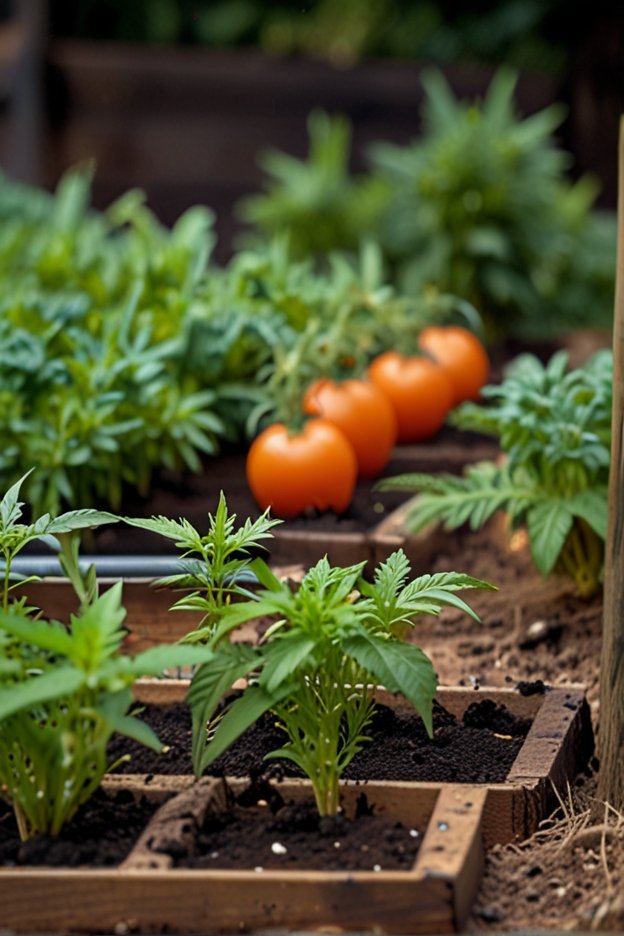
Selective Herbicides (Optional)
While manual, mechanical, and organic methods are often preferred for managing weeds, there are situations where these approaches may not be sufficient, particularly with persistent or widespread infestations.
In such tough cases, selective herbicides can be an effective last resort.
Here’s an in-depth look at how to use them safely and effectively:
Understanding selective herbicides
Selective herbicides are designed to target specific types of plants while leaving others unharmed.
This specificity makes them useful for controlling weeds in lawns, gardens, and agricultural settings without damaging desired crops or ornamental plants.
Types of selective herbicides
- Broadleaf herbicides: These target broadleaf weeds, such as dandelions, clover, and thistles, while typically sparing grasses. They are often used in lawn care.
- Graminicides: These are selective herbicides that target grassy weeds, such as crabgrass and foxtail, without harming broadleaf plants.
- Pre-emergent herbicides: These prevent weed seeds from germinating. They are applied to the soil before weeds appear and are effective for controlling annual weeds.
- Post-emergent herbicides: These are applied to actively growing weeds. They are used when weeds are already visible and need to be eradicated.
Safe and effective use
Using selective herbicides requires careful attention to detail to ensure safety and effectiveness.
Here are the steps to follow:
Reading the label
Always start by thoroughly reading the herbicide label.
It contains crucial information on application rates, timing, target weeds, and safety precautions.
The label also specifies which plants are safe from harm and under what conditions the herbicide should be applied.
Application timing
Timing is critical for effective herbicide use.
Pre-emergent herbicides should be applied before weed seeds germinate, often in early spring or late fall, depending on the weed’s life cycle.
Post-emergent herbicides are most effective when weeds are young and actively growing, typically in the early morning or late afternoon when plants are most receptive to absorption.
Correct dosage
Use the herbicide at the recommended dosage.
Applying too little may be ineffective, while too much can damage desirable plants and harm the environment.
Measure accurately and mix according to the instructions.
Application method
- Spot treatment: For small infestations or individual weeds, apply the herbicide directly to the weeds using a spray bottle or applicator.
- Broadcast application: For larger areas, a sprayer or spreader may be used to apply the herbicide evenly. Ensure even coverage to avoid untreated patches where weeds can survive.
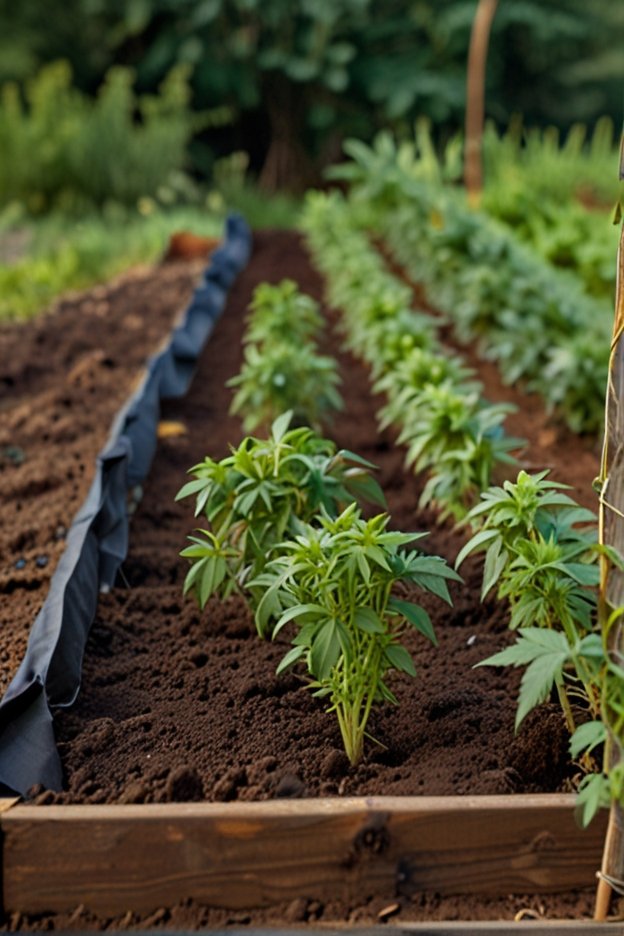
- Read also: Stress-Free Gardening: Top Tips to Protect Vegetables From Pests
- Read also: Garden Detectives: Cracking The Signs of Pest in Vegetables
Conclusion
Weed control is a crucial aspect of maintaining a healthy and productive vegetable garden.
By understanding the problems weeds cause, the importance of weed control, and various methods for preventing and battling established weeds, gardeners can create a weed-wary garden that thrives.
Remember to prioritize organic methods and maintain consistent weed control throughout the growing season to ensure a successful harvest.


